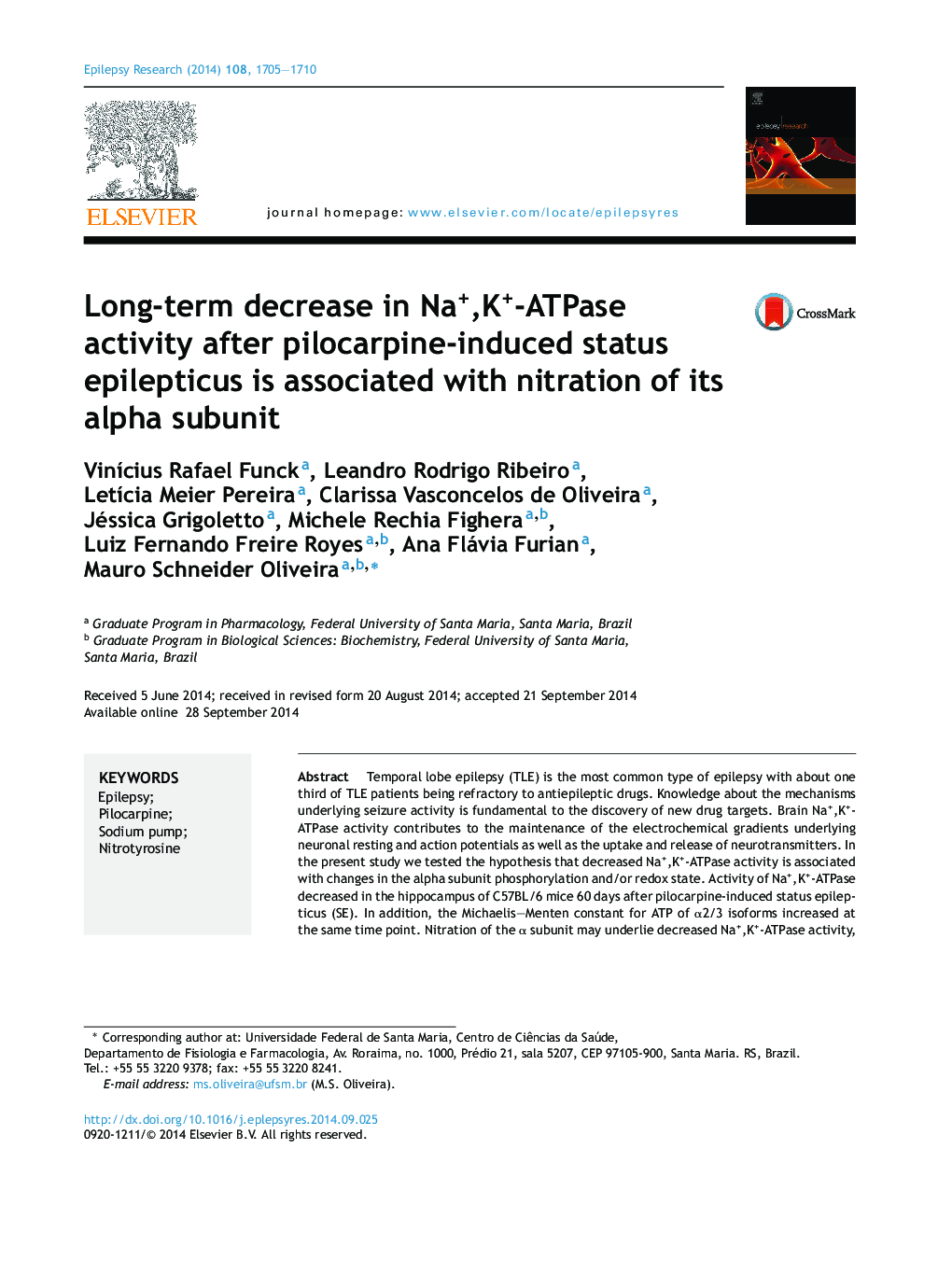| Article ID | Journal | Published Year | Pages | File Type |
|---|---|---|---|---|
| 6015500 | Epilepsy Research | 2014 | 6 Pages |
Abstract
Temporal lobe epilepsy (TLE) is the most common type of epilepsy with about one third of TLE patients being refractory to antiepileptic drugs. Knowledge about the mechanisms underlying seizure activity is fundamental to the discovery of new drug targets. Brain Na+,K+-ATPase activity contributes to the maintenance of the electrochemical gradients underlying neuronal resting and action potentials as well as the uptake and release of neurotransmitters. In the present study we tested the hypothesis that decreased Na+,K+-ATPase activity is associated with changes in the alpha subunit phosphorylation and/or redox state. Activity of Na+,K+-ATPase decreased in the hippocampus of C57BL/6 mice 60 days after pilocarpine-induced status epilepticus (SE). In addition, the Michaelis-Menten constant for ATP of α2/3 isoforms increased at the same time point. Nitration of the α subunit may underlie decreased Na+,K+-ATPase activity, however no changes in expression or phosphorylation state at Ser943 were found. Further studies are necessary define the potential of nitrated Na+,K+-ATPase as a new therapeutic target for seizure disorders.
Related Topics
Life Sciences
Neuroscience
Neurology
Authors
VinÃcius Rafael Funck, Leandro Rodrigo Ribeiro, LetÃcia Meier Pereira, Clarissa Vasconcelos de Oliveira, Jéssica Grigoletto, Michele Rechia Fighera, Luiz Fernando Freire Royes, Ana Flávia Furian, Mauro Schneider Oliveira,
